Speaker's Biographies & Abstracts
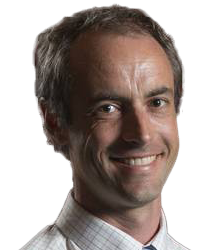
Simon has worked for over 14 years with Geoscience Australia, PSMA Australia and the United Nations in the establishment and management of national geographic datasets and products. At Geoscience Australia, he has managed a range of collaborative geospatial and modelling programs with states, industry and other Australian Government departments for geographic information management and critical infrastructure modelling programs.
AbstractEverything happens somewhere. Information about location and what is happening at that location are essential components for decision making - to assist economic development in a sustainable manner, to manage our impact on the environment, to make our communities safe, to deliver services, and innovate in a digital world.
Foundation spatial data is that information which are utilised widely across different sectors of society, are critical for government or public safety functions, and contribute significantly to economic and social prosperity. In Australia, these datasets are managed as a "framework". The Foundation Spatial Data Framework consists of the datasets themselves, the governance to maintain the datasets, and the policies and systems to make the datasets available. Government in Australia continues to play the overarching role in the operation of the framework. Increasingly, government is looking for opportunities to partner with the private sector to fulfil the growing demands for foundation spatial data, look for efficiencies, and encourage innovative applications. This is not without its challenges but holds promise for the future.
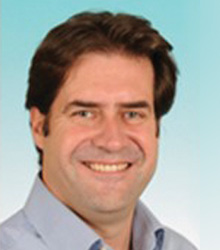
Director Strategic Business Development, Andy provides advice to government agencies in Europe and across South East Asia. He focusses on government spatial agreements, and how these deliver economic, environmental and citizen benefits.
He has nearly 30 years' experience in the Geographic Information Industry, starting his early career as a surveyor with Ordnance Survey and then progressing to Chief Surveyor of London's surveying operation. He then became Head of Ordnance Survey Public Sector, and during this time he was responsible for developing and implementing the Public Sector Mapping Agreement (PSMA) for Great Britain, which brought together over 4,000 organisations under a single contract to all use the same spatial data under a common spatial reference system. He is also a member of the Chartered Management Institute, and served as a Director on the Association for Geographical Information and a Fellow of The Royal Geographical Society.
To ensure the best possible policy decisions are made by Government, it is essential that key evidence from a variety of organisations across the public sector is easily and readily available by decision and policy makers to achieve that aim. Ordnance Survey International will explain how this has been achieved by implementing a comprehensive spatial data agreement and referencing standard across the whole of the British Public Sector. We will show how many public sector organisations in Great Britain are already using the same spatial data and referencing to;
- save millions of pounds per year
- reduce carbon emissions
- make the best possible decisions
- ensure public sector organisations can share information effectively
- implement efficient public services
- provide better and engaging citizen services
- ensure citizens are content and confident in public service delivery.
This work further supports government initiatives to improve transparency, accountability, innovation and the accessibility of data across the public sector. By following this model it will be explained how these critical foundations are fundamental to optimsiation of SMART public services.
Abstract SMART Government = spatially connected government
GeoSpace is a whole-of-government (WOG) platform for Singapore government agencies to share and access geospatial data. It was launched in April 2011 by the Singapore Land Authority (SLA), as one of the major projects under the Singapore government Singapore GeoSpatial Collaborative Environment (SG-SPACE) initiative.
With the emerging drone technology, more public agencies are interested to apply drones to construction site inspections. The aerial images captured by one agency can be used by other agencies. Hence Singapore Unmanned Aircraft System (UAS) committee initiated by Ministry of Singapore (MOT) to drive the inter-agency effort of adopting UAS for construction site inspections to explore the benefits of collaboration and conduct proof-of-concepts.
A key success factor of the inter-agency collaboration is using a common platform to facilitate pre-flight discussions and post-flight sharing of captured data. GeoSpace is chosen by the UAS Committee as the platform to support participating agencies to plan collectively the UAS flight paths and share the captured images. Individual agencies will be able to identify construction sites of interest, indicate their intent to conduct a drone flight inspection, and notify other potentially interested agencies. Discussions on matters such as proposed area of operations are held online in GeoSpace. Additionally, existing images of the sites and supporting documents such as the site plans and flight route can be uploaded into GeoSpace. This collaborative platform is also optimised for post-flight analysis by supporting a variety of captured data such as photos and videos.
Using GeoSpace, agencies can reduce the need for long email correspondences to arrange an inspection. GeoSpace also provides a convenient way to share captured data. There is now no need for every agency to be present on site for the flight. Specific requirements can be shared online and agencies can simply log into the platform to view the captured images and videos that are relevant and useful in fulfilling their respective inspection requirements.

Rohaizad is the Director, Business Development for ARECATECH, an integrated consultancy and design services provider to the Oil and Gas industry. He has graduated from Newcastle, UK and has over 15 years of experiences in oil and gas and marine industry in the region.
ARECATECH SDN BHD (ARECA), is one of the major Malaysian Contractor, has been providing varied services in reverse engineering, engineering data management system, engineering, procurement and construction, commissioning for offshore and onshore oil & gas processing and production facilities.
Abstract Overcoming Brownfield Project Execution Challenges with Laser Scanning & Integrated SolutionsOne of the biggest challenge in the engineering process of brownfield project is the availability of reliable existing facilities as built documents. Using unreliable data as a design basis may lead you to a huge amount of rework during engineering and many design changes during the work execution which absolutely costly. Collecting and performing data verification of as built documents can take months and require many site visit verifications as well. The verification become more difficult if there were some modifications performed on the facilities without proper documentation. Overcome these challenges with ARECA expertise in CAPTURE, MANAGE, ANALYSE,DISSEMINATE data in the Brownfield projects.
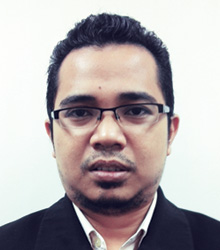
Mohd Zubaidi Daud joined Indah Water Konsortium (IWK) in June 2011 as an Executive and is currently based in the Headquarters of IWK. He is a graduate with a Bachelor Degree (Hons) in Science (Geoinformatics) from Universiti Teknologi Malaysia (UTM). With over 9 years of working experience in diverse fields of geospatial industry, his experience includes survey and mapping, asset management, project planning and GIS application in water and wastewater. Currently he is in charge of managing IWK's enterprise GIS system and developing GIS sewerage database as well as geospatial development in IWK. He has presented various papers related to geospatial technology in water and wastewater in geospatial conference, symposium and forum in Malaysia.
AbstractIndah Water Konsortium Sdn Bhd (IWK) is the national sewerage company of Malaysia which is currently responsible for operating and maintaining more than 6,000 public sewage treatment plants and approximately 17,000 km of sewer networks throughout most parts of Peninsular Malaysia. As part of IWK's asset management initiatives, IWK embarked into an Enterprise Geographical Information System (GIS) in year 2009 to handle spatial information of IWK's physical assets and it is currently being widely used by users in various department within IWK. Besides that, the geospatial technology are also applied and leveraged in various aspects such as hydraulic modelling, fleet management and asset security system to enhance the operational efficiency and asset life cycle. Moving forward, the company's GIS system will be integrated with the newly embarked Enterprise Resources Planning (ERP) system, SAP for better asset management and to optimize the current GIS capability.
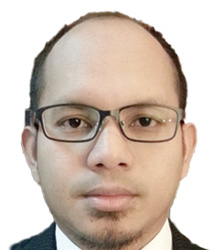
Dr. Hazman is a PhD holder in Conservation and Traditional Arts/Architecture, University of Wales at Prince's School of Traditional Arts, London United Kingdom; Master Degree in Visual Islamic and Traditional Arts, University of Wales at Prince's School of Traditional Arts, London United Kingdom; Bachelor degree in Arts Architectural Stained Glass at Swansea Institute of Higher Education, University of the West of England, Wales, United Kingdom and also a Diploma holder in Architectural Studies, University Technology Malaysia. His early training was as an architect and an educator with vast experience in project management, national and international seminar & event, collaborative research and consultancy.
Abstract Application of 3D Laser Scanning and Digital Tools in Preparing Conservation Management Plan (Cmp) Report for the Masjid Negara of Kuala Lumpur.The Masjid Negara (National Mosque) of Kuala Lumpur was designed to exhibit the inter-wovening of local visual culture and modern architecture during its time of conception. Constructed using reinforced concrete as the main structural framework, the mosque hails a unique architecture of an open umbrella measuring 144 feet in diameter. This concrete folded plate structure is designed to span over the main prayer hall, being supported by 16 round perimetral reinforced concrete columns, with each column rising up to 84 feet high. Apart from the main umbrella structure, the roof structure is also adorned with 95 medium-sized concrete domes and 266 smaller ones. In recent years, water drip leakage has been detected in the roof structure that, if left untreated, may affect the structural rigidity of the roof. Despite various upgrading and repair works undertaken over the years, water leakage from the roof serves as a major problem that demands for a serious assessment. The application of drone photography and 3D laser scanning was adopted in order to assess the extent of the problem. The deployment of advanced digital technologies have facilitated in the creation of heritage inventories, risk assessments thus addressing the need for sustainability. This presentation addresses methods for the assessment, conservation, rehabilitation and maintenance of the sustainability of existing structures in order to produce a comprehensive conservation management plan (CMP) report for the upgrading, repair and maintenance works of Masjid Negara.
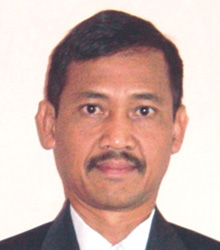
Development in Surakarta city experienced rapid development. Range of the function of the building, both buildings are non-commercial, cultural, social or private buildings mix grow quickly so that the need for monitoring and control. The utilization of web-based geographic information System is the right solution to monitor buildings along with permitting for its aksesible and interoperable when compared with GIS-based desktop applications. This research aims to develop a web-based GIS Spatial software that can be implemented for the management and monitoring of the building along with permitting in the city of Surakarta. In order for the software developed can be used either by the user, it needs to be designed according to your needs. Method of preparation of software system with a waterfall. The results showed that the problems of the building is the domain of affairs of some stakeholders, so that the necessary collaboration are synergistic between a stakeholder. Monitoring and management of building database compiled together through proper work procedures and involving all stakeholders and is manifested in a web-based GIS information system. By using this system have appeared synergy and effectiveness in the management and monitoring of building data. The use of GML to transportation data and Openlayers to data visualization representations of spatial data with a good performance. From the side of kesederhaan, the use of Openlayers based pure javascript more simple compared to Java that depends on the application.
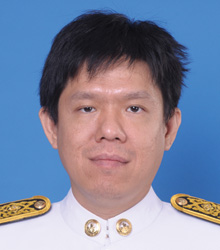
Pongsakorn has a 16 year experience as a power system planner. He is responsible for setting up sub-transmission and distribution system projects for serving demand growth and improving power system reliability, to perform conceptual design according to PEA planning criteria, to do feasibility studies consisting of technical analysis, power flow studies, short circuit analysis, alternative analysis, economic and financial analysis, and to arrange any procedures for selecting a consultant for technical assistance. As a member of Planning Committee of PEA Smart Grid Development, its responsibility is to consider and propose the suitable PEA smart grid projects to the committee before going to PEA Board of Directors for approval. In 2015, I have been assigned to be Manager of Pattaya Smart Grid Project.
Abstract The First Smart Grid project in Thailand, Pattaya CityIn the trend of global, every utility has willing to be a digital utility. They want to utilize ICT infrastructure to create new services to their customer including energy audit and energy efficiency improvement plan as well as they would like to have a near-real time monitoring for any outage occurring in their customers in order to fix it out before customer callings. Smart Grid project at Pattaya city Chonburi province debut as the first smart grid project in Thailand is to be a test-based platform in terms of technology proven and business model for PEA Smart Grid expansion in the near future. In this project, we need to have an integration among new smart meter system, Enterprise Resource Planning system(ERP), SCADA/DMS System, Outage Management System and Geo-Informatics System in order to achieve the first-step of a digital utility.
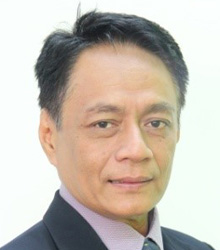
Datuk Ir Elias joined CIDB in 1998 and he currently heads the Technology Development Sector of CIDB Malaysia. He is responsible for the development, promotion and utilization of construction technologies that can achieve higher standards of quality, productivity, safety and professionalism in the construction industry, instituting more environmentally sustainable practices, reducing reliance on low skilled foreign labour and increasing the industry's global competitiveness. Prior to that he headed the Management Sector, CIDB Malaysia where he was responsible for the Strategic Management, Human Resource, Information Mgt, Financial and Asset Mgt of CIDB. At industry and national level, he's very actively involved with activities of standardization for the construction industry through SIRIM and Jabatan Standards. He is also involved in the academic Advisory Panel of Engineering Faculty of various universities (UiTM, USM, UKM, Universiti Teknologi Petronas). He also contributed in the area of energy efficiency through Ahli Jawatankuasa Pemandu Projek Energy Building/Demand Side Management, Suruhanjaya Tenaga and on the technology innovation aspect he contributed as an Expert Member for the Malaysia Brain Gain Project under MOSTI.
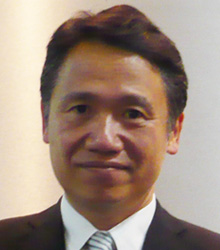
Masanobu Tsuji is the director of Bangkok office, Japan Aerospace Exploration Agency (JAXA). He joined to NASDA, former organization of JAXA in 1985 after getting a master degree in electronics and computer science. Since then, he has worked for satellite development, ground system development and earth observation research. Also, he has worked for capacity building of young engineers in Asia. His recent interest is to implement space technology for societal needs of emerging countries.
Abstract JAXA's Earth Observation Program and Mapping Applications
Mark Lützner is the GNSS.asia Project Manager on behalf of SpaceTec Partners, Germany. Prior to joining SpaceTec Partners has headed the system verification of the Small Satellite Programme Stuttgart and worked as a system engineer for ESA's Future Preparation and Strategic Studies Office. GNSS.asia aims to facilitate EU-Asian cooperation in the GNSS industry. Mr. Lützner received a diploma of aerospace engineering (Dipl.-Ing) from the University of Stuttgart, Germany.
Abstract GNSS.asia – A European initiative for International cooperation across continents in GNSSAs several Global Navigation Satellite Systems (GNSS) are emerging and multi-GNSS applications are rapidly gaining importance, international collaboration in the GNSS scene has become vital. GNSS.asia, financed under the EU Horizon 2020 Framework Programme for Research and Innovation, provides a comprehensive range of hands-on support services to GNSS industry enterprises, assisting them to develop commercial activities in Asia-Pacific. GNSS.asia performs detailed mapping of GNSS collaboration opportunities, supports the formation of concrete industrial partnerships and promotes European GNSS differentiators. Over the past four years it has helped over 30 European and Asian businesses to find partners internationally, namely in India, Greater China, Japan, Korea, Southeast Asia and Australia. Interested businesses are invited to explore possibilities of getting engaged in the growing GNSS.asia community.
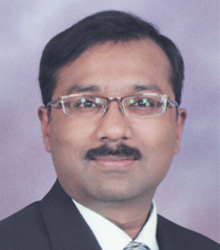
Soma is with the Digital Innovation Division, overseeing the Strategy and Planning for the Big Data Analytics (BDA) Initiative at Malaysia Digital Economy Corporation (MDEC). MDEC is a federal agency entrusted to develop, coordinate, and promote Malaysia's digital economy, ICT industry, and the adoption of digital technology amongst Malaysians. Soma's role is to develop, recommend and oversee the implementation of policies, strategies, initiatives and programmes that will lead to the proliferation of the usage of BDA in the private sector and catalyse the adoption & usage of BDA in the public sector as well as build the BDA industry in Malaysia.
Abstract Malaysia at the forefront of Big Data Analytics: An overview of the National BDA InitiativeMalaysia is one of the few countries in the world with a structured Big Data Analytics (BDA) roadmap to fully unleash the value of big data. Hear about the strategies, specific initiatives and programmes that have been put in place to propel Malaysia to become a leading BDA solution hub in ASEAN.
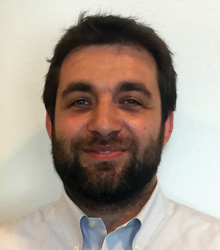
Climate-change driven natural disasters have especially impacted the Asia-Pacific region. The demand for technology solutions to respond to such events and to pre-emptively mitigate their consequences has sharply increased in the last decade. The present contribution focuses on illustrating, by means of real-life case studies, cutting-edge radar technologies for natural hazard risk mitigation.
The reason for increased interest in airborne and ground-based radar systems stems from their potential to provide valuable and complementary information to satellite observations. In the case of natural disasters, airborne SAR has the distinctive advantage of providing maps of the impacted areas in very short time, contrary to satellite systems which may take hours to relay the data to ground stations. For steep natural slopes or dams, ground-based interferometry provides displacement information not available from satellite SAR due to the acquisition geometry. The need for local sensors for areas of high strategic interest arises naturally from these considerations, and a collection of case studies is used to demonstrate the operational robustness of MetaSensing radars and to appreciate how skilful use of high-resolution airborne and ground-based systems complements geospatial information from satellites.
Last in MetaSensing product line is the advanced X-band weather radar for urban areas. The only commercial system world-wide to provide, with high spatial and temporal resolution, accurate information of rain rate, wind and type of precipitation, through hydrometeors classification. This system is the preferred choice for real-time weather and precipitation observation and nowcasting.
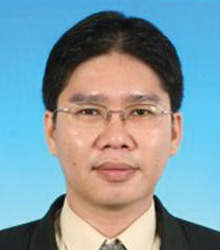
Lim Choun-Sian is a Senior Research Officer at the Centre for Southeast Asia Disaster Prevention Research (SEADPRI-UKM), Institute for Environment and Development, Universiti Kebangsaan Malaysia. A geologist by training and specialising in engineering geology, geological-hazard risk assessment and application GIS. He obtained his MSc in Environment; Development, and BSc in Engineering Geology. He has worked on research projects, training courses and consults related to landslide, flood and earthquake-tsunami hazards, disaster risk reduction management and application of remote sensing/GIS for hazard-related environmental and policy planning. His field experience related to hazards and disasters were mainly in post-disaster mapping of earthquakes, landslides and flood in Malaysia and Indonesia. He was one of the team members in rapid-assessment for numerous landslides in Malaysia, tsunami disaster in Malaysia in December 26, 2004 and major flood in Kelantan 2014.
Abstract Integrated and multi-hazard disaster management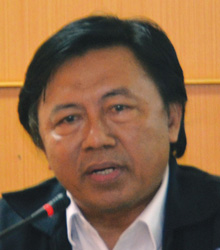
Like most areas of karst, Pucung Village, Wonogiri, Central Java, that located in Gunung Sewu karst region, has difficulty to get fresh water for daily use. However, although dry on the surface, Pucung village has potential resources of underground water, This paper describes the use of Geographic Information System (GIS) and speleology survey for estimating underground river system ini Pucung Village. The primary data used is data from color infrared aerial photo interpretation scale of 1: 10,000 and field work (survey surface and subsurface). The method used is a color infrared aerial photo interpretation scale of 1: 10,000, the speleology survey for cave mapping, and GIS. Aerial photo interpretation to get geological map, landform map, morphology map, drainage patterns map, and the cave distribution map. GIS is used to predict the underground river system through maps overlay that have been produced.
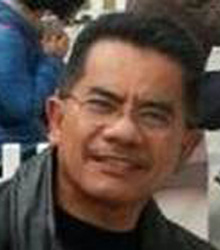
Sr Dr Zainal A Majeed, JUPEM's Director of Survey and Mapping in-charge of policy, regulation, guideline, practice and procedure concerning mapping and GIS. Previously, he was a Kelantan's Director of Survey and Mapping, a fellow RISM member and past Chairman of East-Coast Branch RISM. He is a Registered Land Surveyor under Licensed Surveyor Board, Peninsular Malaysia and holds a Bachelor Degree in Land Surveying UTM and Master Degree from West Virginia University, USA. He graduated his doctoral degree in the University of Newcastle upon-Tyne, UK, and has extensive experience working in government departments including NaLIS, JKR, and few JUPEM states, INSTUN and MaCGDI, Ministry of NRE. He is now concentrating in researches and works on enhancing mapping process, and geospatial digital mapping technology and SDI.
Abstract Names in Mapping and GISThe necessity of having geographical names is to match geographical data. Names on points, lines and polygon data in GIS and map present important value for readers and GIS users to capture the spirit of the data. When we want to look for location and places we use names and the names depicts the whole picture in term of spatial and attributes. Basically the primary access to spatial information is via geographical names. In GIS, querying, buffer and overlay operations on the basis of named objects are possible on the basis of place name standardization. Malaysia participated actively in the forum. Geographic names management is much complex as it involves different languages, culture and scripts. No one can be an expert in geographical names from all the languages that are spoken over the world, or in all national names practices.
Determination and updating of geographic names has been discussed dynamically in the GIS world and has created research and report that are deliberated in the United Nation under the United Nations Group of Experts on Geographical Names (UNGEGN). The paper tends to discuss the efforts and coordination that has been taken through the National Committee on Geographic Name in Malaysia. The toponymic guidelines for map and other editors for MALAYSIA has been tabled and edited with the help of UNGEGN toponymic guideline coordinator. The guideline will be highlighted in the presentation as awareness because the use of toponymical guidelines implies some knowledge of the language, culture, script that is valuable to be debated. Apart from that, treatment will be given regarding the Geographical Names Database (MyGeoname) which is a geographical names data bank that stores names, locations, historical backgrounds and gazette notifications. It is an authoritative records that are available for government and public use.
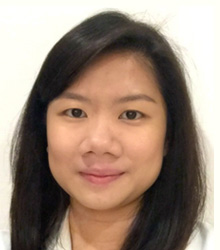
Designed and developed by Singapore Land Authority (SLA) using open source technology, the One Historical Map aims to capture the momentous transformation of Singapore's streetscape over the span of 50 years since its independence. With five editions of geo-referenced post-independence Singapore street maps and more than 300 pre-loaded geo-tagged photographs, the app allows user to explore the cityscapes of yesteryears by comparing the maps side-by side.
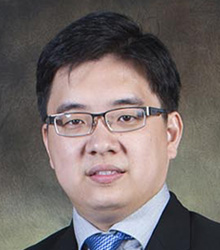
Autism or ASD is a general term used to describe a group of complex disorders of brain development. Children with autism face challenges in terms of social involvement, communication skills and safety awareness. Some of the children have serious of wandering act and hyperactive. The application of space and geospatial technologies such as Global Navigation Satellite Systems (GNSS) has proven its usefulness in improving personal tracking. The National Space Agency (ANGKASA) has developed a prototype tracking system involves the use of GNSS capable device with communication services. The system allows parent to preset the daily activity zone of their children with the specific time frame via the developed mobile apps. A SMS alert will be generated to notify the parent once their children exited from the preset activity zone. In collaboration with Pusat PERMATA Kurnia, about 40 children under the centre been selected to use and test the effectiveness of this prototype system. The project is funded by MOSTI Social Innovation (MSI) program under the Ministry of Science, Technology and Innovation (MOSTI) aims to benefit the community at the grassroots level by exploiting space technology.
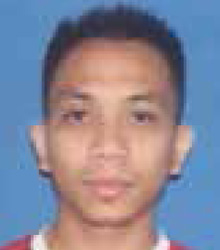
Land is an important source for sustainable development of Malaysia. Therefore, land resources must efficiently and systematically managed with good governance to maximize the value and returns. Recently, FELDA had transformed their land management and administration department in order to realized the national transformation programmed that aimed to strengthen FELDA as largest federal land development entity that give major contribution to the national economic growth. One of the steps is to develop and integrated electronic database of land assets and information and also training to all FELDA officials with information technologies in order to upgrade the management works. FELDA is working towards exploring and implement systems and networks in order to enhance the management works of land administration.
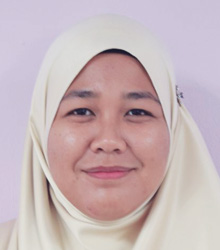
Since 2014, Pejabat Daerah & Tanah Melaka Tengah (PDTMT) (Melaka Tengah District and Land Office) established an innovative project called 1Mapping. 1Mapping was established after rise in public complaints regarding inefficiencies by government agencies in servicing the People of Malaysia. PDTMT aim to improve its service by using 1Mapping helping in the decision making process. The main concern of 1Mapping is to provide a data collection and information centre consisting wide range of information such as latest projects and assets of PDTMT. 1Malaysia is a combination and interconnection between Government Transformation Program (GTP) and Economic Transformation Program (ETP). The basic foundations of GTP included 6 NKRAs.
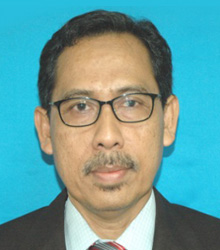
Sr Mohamad Kamali bin Adimin started his career with Department Survey and Mapping Malaysia on September 1983. He currently serves as the Director of Survey and Mapping in the State of Selangor. He has a wide range of experience in land survey, mapping, GIS, NSDI as well as geoinformation standard development at the national and international level. He also has been involved in the international arena that related to international land boundary with the neighbouring countries. He was also attached to the Malaysian Center for Geospatial Data Infrastructure (MaCGDI). Among his contribution is the establishment of MyGDI as the Malaysian SDI. Sr Kamali holds B.Sc. in Survey (Land) (Hons.) from University Technology of Malaysia (UTM) and a Professional Master Degree in Geoinformatics from ITC, Netherlands. In a professional affiliation, Sr Kamali is a Fellow of the Royal Institute of Surveyors Malaysia (FRISM).
Abstract The Role and Readiness of Land Surveyors toward the Implementation of BIM in MalaysiaBuilding Information Modeling (BIM) is one of the most promising recent developments in the architecture, engineering, and construction (AEC) industry that Malaysia is looking to implement in a near future. With BIM technology, an accurate virtual model of a building is digitally constructed. The building information model contains precise geometry and relevant data needed to support the design, procurement, fabrication, and construction activities required to realize the building. A building information model characterizes the geometry, spatial relationships, geographic information, quantities and properties of building elements, cost estimates, material inventories, and project schedule. The model can be used to demonstrate the entire building life cycle. Construction documents such as drawings, procurement details, submittal processes, and other specifications can be interrelated. The construction industry life cycle involve various professional from different fields. Most likely they are planners, building designers, land surveyors, quantity surveyors, building surveyors, architect, valuers and contractors. Each professional have their own roles and authorities. One of the most important professionals involve in construction industry life cycle is land surveyor. This paper explores Land Surveyors involvement, roles and authority in building information modeling from various aspect including BIM concepts and implementation, readiness, accuracy, geospatial relationship between objects and locations, coordinate system in 3 dimensional platform, data format and integrations, data sharing policy and accreditation of BIM for Malaysian Professional Land Surveyor.

Bandwork GPS Solutions Sdn Bhd has been serving the geospatial industry with leading-edge technologies and solutions across diverse field of applications, including land surveying, mapping, construction, agriculture & etc. They also provide consultation, support, trainings and seminars to government officials and private sector employees on a regular basis. Bandwork GPS Solutions Sdn Bhd has been appointed by FARO as the Malaysia Distributor for 3D Documentation products.
Mr Jackson Cham holds a Bachelor of Engineering (Hons) Degree from The University of Adelaide, Australia. He is a certified trainer for FARO Laser Scanning Products with FARO Asia Pacific. He has been leading implementation of innovative laser scanning solutions for geospatial applications and projects in Malaysia.
Abstract Spatial Data 3D Documentation & Analysis with FARO's 3D Laser Scanning TechnologiesFARO 3D laser scanning technologies have been widely applied for high-speed documentation of 3D spatial data, where high-resolution and accuracies are essential. With the advancement of FARO 3D Software, 3D documentation technologies have evolved to enable even more innovative solutions for deformation monitoring, engineering, Building Information Modeling, crime scene reconstruction, land surveying, disaster management and many more.

BIM for infrastructure has become an industry standard, it has revolutionized the way teams work together to communicate, collaborate and solve problems, resulting in high quality projects being built more quickly and at a lower cost. Using Laser Scanner to capture 3D data for design at every point of construction helps to improve collaboration throughout the life cycle of infrastructure projects. With this 3D modeling solution, the current 3D building status can be compared with the CAD model at any time – a quality control process that eliminates expensive and time-consuming rework.
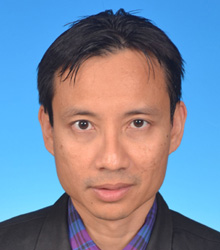
Mr. Aziz Yusoff is the Senior Vice President of Special Projects at Astronautic Technology (M) Sdn Bhd or ATSB®. He has been working there for the past 12 years doing among other things, researching and evaluating commercially as well as technically space and related technology sensors and systems. Graduated with a Physics degree as well an Electrical Engineering Masters Degree specializing in Communications, Digital Signal Processing, and Processor Architecture, his unique background and varied working experience of more than 20 years allows him to perfectly mesh into the extreme multidisciplinary requirements of space and advanced technology engineering while having an insight into cost effectiveness and commercialization aspects.
Abstract A Multitier and Multilateral Social Innovation Approach for Space Technology DevelopmentAmong the primary concerns of developing nations is on how to nurture indigenous industry development in advanced technology, especially where Direct Domestic Investment is extremely limited. This is more so true in Space Technology. Leveraging on its skills and expertise of more than 19 years as the leading Space Technology industry player in Malaysia, Astronautic Technology (M) Sdn Bhd proposes a Multitier and Multilateral Social Innovation Approach for Space Technology Development. The approach utilizes a formulation mix of Cubesat and other related self developed platforms in where various social segments from schools, academic institutions and related industries are offered opportunities of not only space technology activities but also in business. The ultimate goal is to nurture the local passion and concern for space technological development to the benefit of Malaysia’s future economic competitiveness.
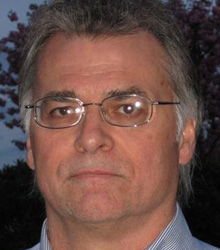
Gordon Staples received the M.Sc. degree in ocean physics and the B.Sc. degree in honours physics and oceanography from the University of British Columbia. He joined MDA in 1993 and is currently senior analyst and project manager for Geospatial Services. In this role, he develops radar applications, manages research projects, develops and delivers radar training, and is active in business development. Mr. Staples is the President of the Canadian Remote Sensing Society.
Abstract The Role of RADARSAT-2 for Disaster ManagementDuring a disaster, there is a critical need to acquire information to support mitigation efforts. RADARSAT-2 data has been used to support both terrestrial and maritime disasters. Increased use of RADARSAT-2 data, however, is linked to three key components: data acquisition, information extraction, and data delivery. The first objective of this paper is to outline capabilities and constraints with-respect-to the key components and how RADARSAT-2 can mitigate these constraints, and the second objective is to provide an overview of RADARSAT-2 applications for disaster management.
Data acquisition is defined to mean the capability to program RADARSAT-2 and the frequency that a given area can be imaged. The RADARSAT-2 ground system was designed to meet operational needs. The satellite can be programmed in as little as twelve hours, with four-hour programming possible for emergencies. Using RADARSAT-2 variable imaging geometry and modes, imagery can be acquired every two-three days at equatorial latitudes with multiple acquisitions per day near the poles, based on the use of a single polar orbiting, sun-synchronous SAR sensor.
Information extraction entails a combination of automated algorithms and visually-based techniques. Automated algorithms have been developed, but the presence of false positives requires an analyst in the end-to-end processing chain. Information also depends on SAR parameters such as polarization.
Data delivery is limited by communication bandwidth. For a typical radar image, with a volume in the hundreds of megabytes, data transfer times are in the tens of minutes, but transmission times can be dramatically reduced if an information product is derived from the radar image. For example, an information product that delineates the flood extent has a volume in the hundreds of kilobytes meaning transfer times in minutes.
The paper concludes with a summary of RADARSAT-2 application and recommended imaging modes to meet disaster management needs. Relatively mature applications include flood mapping and oil spill response. Emerging applications include the use of RADARSAT-2 to measure relative changes in the forest-floor organic layers with the aim to estimate the drought code can be used to aid in the estimation of forest-fire risk.
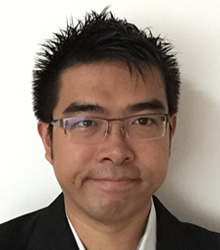
Ken Soh joined Bentley Systems in 2016 and is the Principal Consultant for Asia region. Ken bring with him over 10 year of experience in Geospatial market. His role focuses on the use of Bentley solutions in addressing the needs of Smart Cities. His previous role prior to joining Bentley was a senior manager for IDA in Singapore , he was responsible for driving the National 3D Standards and establishment of a Geospatial Technology Exploitation lab focusing on VR , IPS , etc. Educated in National University of Singapore , Ken has a Bachelor of Engineering (Computer Engineering). Ken works out of Bentley Singapore.
Abstract Advancing Smart Cities through Bentley Solution
BuildingSMART Malaysia
Mohd Harris Ismail is a Deputy Chairman of buildingSMART (Malaysia Chapter) appointed since 2014, and actively involved in BIM consultation, research, teaching and training. Previously he was Deputy Director of the IBS Center before his service is required in the CIDB Headquarters under the Information Technology Division in 2012. He helms the Construction IT Department in CIDB facilitating the development of cutting edge technology for Malaysia’s construction industry from 2015 to 2016. Prior to this, Harris has been involved in multi-million construction projects around Malaysia including Formula 1 in Sepang and Iconic Hospital project in Penang. In addition to his educational background in Construction Management and Civil Engineering, he is currently pursuing a PhD in Building Information Kodeling (BIM) in Universiti Kebangsaan Malaysia. Harris is also a Certified Professional for Revit Architecture 2014 (Autodesk) and trained as trainer for Bentley Aecosim and had undergone a training for ArchiCAD and Tekla Structure.
Abstract BIM Implementation for Mega Projects in Malaysia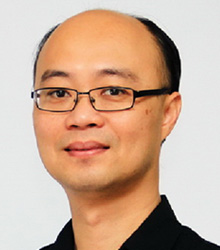
Voon-Chet KOO graduated from University of Malaya in 1997, and received his MEngSc and PhD degrees in Microwave Engineering from the Multimedia University, Malaysia in 1999 and 2005, respectively. He is currently a full Professor of Multimedia University. His research interest includes synthetic aperture radar design, SAR signal processing, and embedded system design. Prof Koo has been a principal consultant for various government agencies and engineering firms since 2000. He has published more than 100 papers in refereed journals, international conferences, 2 books, and 4 patents. He is also the recipient of the inaugural Young Engineer Award by the Institution of Engineers, Malaysia in 2004. Prof. Koo is presently the Chairperson of the Centre for Remote Sensing and Surveillance Technologies, MMU, Chairperson of the IEEE Geoscience and Remote Sensing Society Chapter, Malaysia Section, and Fellow of the ASEAN Academy of Engineering and Technology (AAET).
Abstract Ground-based Imaging Radar for Landslide MonitoringRecently, the ground-based interferometric SAR (GBSAR) has proven to be a powerful tool for monitoring land deformation such as landslides, glacier movements and volcanic hazards. By using GBSAR, it is possible to detect subtle changes in the order of a fraction of the radar wavelength. However, the accuracy of the interferometric phase measurement is greatly affected by the degree of decorrelation between the SAR images that have been acquired from slightly different times or at different positions. In this paper, the phase statistics of a typical GBSAR instrument are studied. The phase deviations are analyzed and compared with the experimental results obtained from a GBSAR instrument in an aneachoic chamber and at outdoor test sites.
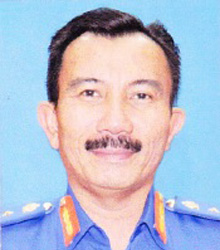
Nor Hafifi was the Head of Operation for the Department of Civil Defence, where he was involved in managing many disasters in Malaysia, including the Bright Sparklers Explosion in Sungai Buloh, Selangor (1991), Highland Tower condominium collapse in Hulu Kelang, Selangor (1993), landslide in Pos Dipang Perak and the Greg Storm Tragedy (1996). He was involved in planning, developing and managing the Government Integrated Radio Network (GIRN) together with Sapura, UKAS-EPU (Public-Private Partnership Unit, Economic Planning Unit, Prime Minister's Department) and other government agencies. He is currently the member of the Institute of Civil Defence and Disaster Studies, United Kingdom (now known as the Institute of Civil Protection and Emergency Management (ICPEM), which is affiliated to the International Civil Defence Organisation (ICDO) based in Geneva, Switzerland. Recently he was appointed as a member of Board of Studies (BOS) for Disaster Risk Management Programme – Master of Disaster Risk Management for Malaysia-Japan International Institute of Technology, Universiti Teknologi Malaysia (UTM) 2015-2017 session.
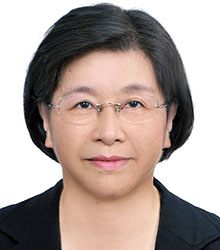
Hsun-Wen Wu graduated from Fu Jen Catholic University with the major of applied statistics. She has worked for the government statistics department for over than 35 years and now serves as the Deputy Director of Department of Statistics, Ministry of the Interior. She has continuously pushed the progress of enriching socio-economic data with spatial attributes since she joined the group of Socio-Economic Database under National Geographic Information System (NGIS) in 2006. By visualizing statistical data as maps and other easy-to-understand formats, decision makers can gain more information easily and hence make smarter policies.
Abstract Developing Nationwide Statistical Map APIs for Effective GovernanceA thorough understanding of the population, socio-economic activities, and geography is the key factor for effective governance. And it is the main reason that makes statistical data and topographic maps so important for every modern country. However, in the past, the statistical data in Taiwan could not be well integrated with spatial data, and the data sharing between the central and local government was also not efficient because of the absence of a nationwide platform to share data. To solve these problems, the Department of Statistics, the Ministry of the Interior, Taiwan decided to develop a service platform that could integrate all statistical data and provide various map APIs for local governments and organizations on a cloud platform.

Ground Penetrating Radar (GPR) has now widely been used in various types of industries. It can be used in diverse fields such as Land Surveying, Environmental Site Characterization, Hydrology, Civil Engineering, Forensics, Military, and etc. Because of its high resolution, GPR is the useful tool for quantifying the variation of subsurface, and its ability to see a non-metallic and metallic objects makes it a useful mapping tool to detect, localize, and characterize the buried things as needed. Significantly, GPR has been used both from the surface and from boreholes to map a wide of buried structures. Therefore, the objectives of this paper are to (1)explain the fundamental of GPR and to (2)discuss the usefulness of GPR in various industries.
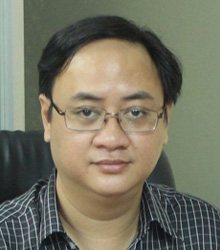
Ho Chi Minh City is the largest city, the most important center of economic, cultural, and education of Vietnam. In the context of quick growth of economic and population, a smart city is a key solution that HCMC's leaders determined to build.
To perform this task, HCMC focuses investment on implementation of e-government services. The invested systems have effectively provided public services to citizens and supported in professional management. But the system remains highly fragmented, lacks of connectivity and sustainable development.
In the future, an important task is to implement integrated solutions, connecting the different database source to serve the mining and support in making decision in high level. A geospatial system takes an infrastructure role to connect the database of economy, society, population, urban management and other data.
This is an important infrastructure for the implementation of plans of city in projects such as intelligent transportation, smart healthcare, smart security and intelligent water supply system. Leaders of HCMC are calling on domestic and oversea businesses, scientists participation in counseling and assistance in projects to develop smart city.
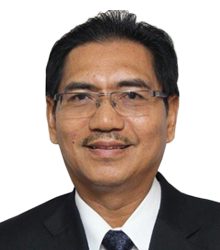
YBhg. Dato' Sr Hasan Jamil is the Deputy Director General I, Department of Survey and Mapping Malaysia (JUPEM) since April 10, 2014. He is also the Deputy Chairman of the Land Surveyors Board Malaysia, Chairman of Technical Committee 2 / SIRIM on Geographic Information Standards and Chairman of Framework Technical Committee, Malaysian Geospatial Data Infrastructure.
He holds a Master Degree in Geographical Information System from University of Edinburgh, United Kingdom and a Bachelor Degree in Survey (Land) from University of Technology Malaysia.
He has served in various capacities since 1979 with JUPEM in the States of Terengganu, Kelantan, Sabah, Penang, Selangor, Federal Territory of Kuala Lumpur/ Putrajaya and JUPEM Headquarters in Kuala Lumpur.
He is also a Fellow of the Royal Institution of Surveyors Malaysia (RISM), President of RISM for Session 2014/2015 and Chairman of the Geomatics and Land Surveying Division, RISM for Session 2010/2013 as well as a Registered Land Surveyor.
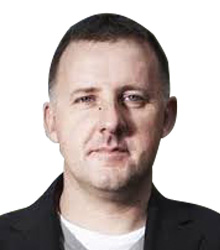
Ed Parsons is the Geospatial Technologist of Google, with responsibility for evangelising Google's mission to organise the world's information using geography. In this role he maintains links with Universities, Research and Standards Organisations which are involved in the development of Geospatial Technology. He is currently co-chair of the W3C/OGC Spatial Data on the Web Working Group. Ed is based in Google's London office, and anywhere else he can plug in his laptop. Ed was the first Chief Technology Officer in the 200-year-old history of Ordnance Survey, and was instrumental in moving the focus of the organisation from mapping to Geographical Information. He came to the Ordnance Survey from Autodesk, where he was EMEA Applications Manager for the Geographical Information Systems (GIS) Division. He earned a Masters degree in Applied Remote Sensing from Cranfield Institute of Technology and holds a Honorary Doctorate in Science from Kingston University, London and is a fellow of the Royal Geographical Society. Ed is married with two children and lives in South West London.
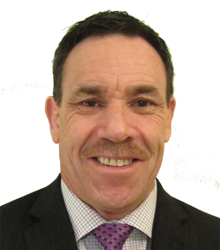
Greg leads the Secretariat for the United Nations Committee of Experts on Global Geospatial Information Management (UN-GGIM), providing strategic policy advice and leadership in the coordination and implementation of UN-GGIM initiatives with Member States and related International Organizations involved in national, regional and global geospatial information management. He is also responsible for developing the substantive content for the Committee of Experts, High Level Forum's, international technical capacity development workshops, and other international fora.
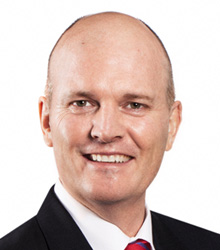
John Taylor joined Bentley Systems in 2011 and is the Senior Director for Reality Modelling. John has over 30 years of experience in the Federal, State and Local Government, Defence & Emergency Services, Utilities, Transportation and Geospatial markets, holding various senior management and consulting positions. His role focuses on the portfolio development of Bentley's Reality Modelling Solutions across all Infrastructure Sectors in Asia Pacific, and is Bentley's Global Defence Business lead. Prior to joining Bentley, John held positions as: a corporate director with an Abu Dhabi based geospatial data services company; a senior consultant with PA Consulting's information solutions division in UK and UAE; and was the lead GIS subject matter expert with the UK Ministry of Defence. He has lectured in GIS, spatial analysis and data management up to MSc level and is a qualified Chartered Surveyor (RICS). Educated at the Royal Military Academy Sandhurst and the University of Edinburgh, John has an MSc in GIS and a Diploma in Defence Geospatial Information Management. John is based in the Gold Coast, Australia.
Abstract Innovation In Reality Modelling For National Infrastructure ProjectsThe emergence of reality modelling as a new geospatial industry capability to s upport national infrastructure delivery is having a major impact in terms of delivery efficiency and design optimization. These reality models are also starting to become part of the mainstream capabilities to support the ongoing asset management requirements. Using examples of information mobility, enhanced workflows and improved information visualization, Bentley Systems will show how significant this capability is becoming and why infrastructure asset owners and project delivery organisations should be focused on integrating these new data formats into their business processes.
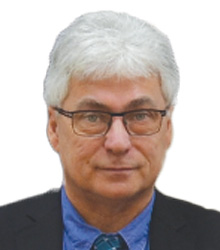
Professor Michael Petterson is the Director of the Geoscience Division (GSD) of the Pacific Community (SPC) based in Suva, Fiji. GSD is a geoscience for development unit that operates a number of programmes dealing with disaster and risk, climate change adaptation, environmental geoscience, ocean science, geospatial technology, water and sanitation, and natural resources. Michael is a geologist who began his professional life undertaking his PhD in north Pakistan examining crustal evolution and mountain building processes. Following this he worked for the British Geological Survey with residential spells in Solomon Islands and Guyana and worked in a range of countries including the Caribbean, Africa, Mongolia and Afghanistan. Immediately prior to his position with SPC Michael worked as Professor of Applied Geology at the University of Leicester in UK.
Abstract Using Geo-information analysis to improve Pacific Disaster ResilienceThe Pacific Community (SPC) is a non-profit science and technical intergovernmental agency that applies science for international development across 22 Pacific Island countries and territories. Although, by Asian standards, Pacific populations are very low (the total population of the region is around 11 million, of which around 8 million people live in one country, Papua New Guinea) the relative vulnerability to natural hazards is high.
The high vulnerability of the region is a consequence of a number of factors: 1) many countries have been formed as a result of volcanic and tectonic activity due to the interaction of the Pacific Plate with the Australian Plate and other smaller plates. Whilst these processes have given birth to the islands, they are also the cause of existential geophysical hazards such as earthquakes, volcanic eruptions, landslides and tsunamis; 2) the small size of the islands, set within the largest ocean on earth, means that there may be few places for shelter and safety when disasters strike; 3) the thermal power of the Pacific ocean, particularly the tropical Pacific ocean, drives dynamic and energised meteorological processes that can lead to the development of cyclones, hurricanes, storms, high wind speeds, elevated sea levels and heavy rainfall, which can cause enormous destruction when focused on islands and resident populations; 4) the low elevation and narrow width of atoll islands (only 1-3m above sea level, and less than 1 km wide) makes these environments particularly vulnerable to sea level rise, and ocean inundation, at times of exceptional high (King) tides.
Cyclones, hurricanes, earthquakes and tsunamis cause most damage and loss of life. The larger disaster events cause very significant economic impacts: in 2015 for example, cyclone PAM caused damage that was valued at the equivalent of 66% of the GDP of the island nation of Vanuatu. In 2009 a tsunami killed almost 200 people and affected around 30% of the economy of Samoa. Such large impacts on the economy of small island states can set back economic and social development many years, and even decades.
Assessing and mapping the situational risk analyses for a wide range of natural hazards is an essential part of analysing risk in the region, as is assessing post disaster impacts for immediate humanitarian assistance purposes, and longer term response need. Geospatial data in the form of satellite images, Lidar point data, geological maps, GPS data, hydrographic data and the most accurate geographic/topographic data are essential for the development of improved resilient approaches to hazard and risk. These data are used in manifold ways, including: mapping specific hazards such as individual volcanic, fault activation or flood hazards; assessing the vulnerability of housing, commercial property, roads, bridges and infrastructure; examining the possible options for coastal defence systems; analysing damage following the impact of a cyclone/hurricane, and so forth. SPC works closely with a number of agencies that have improved access to geospatial data and developed expertise to process, model and analyse geospatial data. Digital Globe is a private company that works with SPC in generating satellite data and developing innovative analysis and interpretation methods. The World Bank's PREP programme is working with SPC to develop a modern range of bespoke multiple hazard ICT and geospatial platforms that assist decision making. SPC has been constantly evolving data platforms and portals with increasing levels of sophistication to include the essential geospatial and other data required to make assessments of vulnerability, risk and resilience.
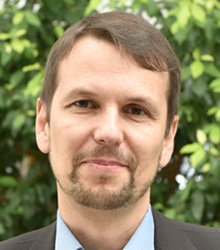
Carsten has 15 years' experience in Indonesia, Germany, UK and, most recently, the Arabian Gulf region. His work focuses on the lifecycle of spatial data from capture, modelling and databases, map production, data management, maintenance and update, data integration, spatial data infrastructures and web services to the use of geospatial information in government, utilities, the private sector and consumers.
Abstract Future Technologies Complementing Surveying and Modelling PracticeDuring this session Carsten will share the lessons Ordnance Survey has learnt during improving 3D modelling. He'll share how Ordnance Survey has looked at several different point cloud technologies for use in their change management programme, identifying when best to use each technology. Carsten will also look at some of the outputs, including 3D Printing and BIM.
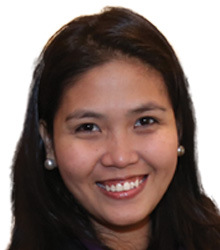
Engr. Melanie Abuel is the Head of GIS Development for Asset Information Management in Manila Water Company, Inc. Her current initiative is on Asset and Risk Management as well as Geospatial Application Development and Systems Integration. Her team won the Asia Geospatial Excellence Award for two consecutive years in 2014 and 2015 for the Business Risk Exposure Assessment of Network Assets and GIS-Critical Activity Review Integration Project. A recent System Integration of GIS with SAP, SCADA, BI and CRM of Manila Water through the Enterprise Asset Management Project has also won their team the CIO 100 Asia and CIO 100 Awards in the United States this year.
Abstract GIS Integration with Core Systems of a Water UtilityIn 2012, Manila Water benchmarked its asset management processes and practices through the IWA-WSAA 2012 International Asset Management (AM) Performance Improvement Project. A key outcome was identification of four key AM improvement initiatives. In implementing these initiatives, the development of an AM Framework, AM Plan and an AM System (AMIS) Strategy. To address the need for an AMIS Strategy, the Enterprise Asset Management Project was implemented in 2015 to integrate 9 core systems such as Business Intelligence, GIS, CRM, SAP-Project Management, SAP-ISU, SAP Project System, SAP-Maintenance Management, SAP Financials and SCADA (System Analytics).
Within a year of implementation, systems integration brought tangible benefits to the organization. An initial savings of 100,000 USD for Application Development and process efficiency for generating Asset Condition Reports. A single source of truth is now available to a cross functional group of experts that transforms asset information into data-driven decisions and relevant management strategies. Traceability has also enabled stringent reporting and analysis of process improvement versus financial investment. Being a highly regulated company, increased efficiency in compliance to its 24-parameter KPI and Business Efficiency Measures through a more prudent and easier audit record retrieval is another goal of this system integration. Call tickets can now be seen in real time along with maintenance activities in facilities and worksites. This has increased efficiency in customer process management towards providing better water and used water services to more than 6 Million customers within its concession area.
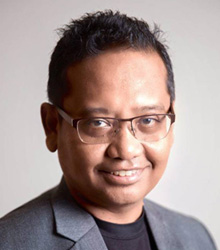
Kamarul is the Founder and CEO of Aerodyne Geospatial Sdn Bhd, Malaysia's leading Integrated UAS service provider. A graduate of Nottingham Trent University with over 20 years of corporate and entrepreneurial experience ranging from information and software technology to construction management and UAV system design and application development.
Aerodyne, the recipient of Frost and Sullivan Entrepreneurial Company of the year 2016 (UAV) provides innovative aerial based managed service solutions for energy and power, construction and property development, management of natural resources and other geospatial intelligence services such as emergency response, public safety, environmental monitoring and precision agriculture.
Abstract Integrating UAS for Effective Construction Management and ReportingDiscover how adding a UAS based service solution into construction project management ecosystem will significantly improve project situational awareness leading to effective decision making, ensuring conformance to requirements and contribute towards eliminating costly mistakes and delays.
Utilizing a fully autonomous UAV system, progress and performance data can be captured quickly and safely, producing a wide array of performance enhancing integrated components such as cloud based documentation and collaborative platform, actionable 3D reality capture, immersive contextual and interactive virtual tour with full historical records and more.

Ministry of Construction
Vietnam
Assoc. Prof. Dr. Arch Do Tu Lan is the Senior Urban Planning and Development Specialist, recently She is member of Chair Board of Association for Vietnam Urban Planning and Development. She was the Deputy Director General of Urban Development Agency-Vietnam’s Ministry of Construction, General Secretary of Vietnam Urban Forum Executive Board and Advisor for the Minister, Honorary Head of the Department of MOC. She graduated as an Architect from Hanoi Architecture University in 1975. She had participated and completed the Scientific Master program named (Spatial Planning for Region of Intensive Growth- SPRING PROGRAM) from 1993 to 1995 which was the cooperation between Dortmund University and Asian Institute Technology – Thai Land. In 2004, she got the PhD by the thesis on Urban Ecological Research for Coastal Tourist Urban Sustainable Development in Vietnam.
She has over 30 years of working experiences in the field of urban planning and development. She was the leader of the project “Urban development adaptation to Climate Change in Vietnam” with the priority focuses on: Coastal urban development adaptation to sea- rising effected by climate Change”, which has approved by the Prime Minister on Dec 2013.. She is also participating in the German expert team of the Mega Cities Project for Ho Chi Minh city in Vietnam and transferring experiences to other cities in Vietnam.
Aerodyne, the recipient of Frost and Sullivan Entrepreneurial Company of the year 2016 (UAV) provides innovative aerial based managed service solutions for energy and power, construction and property development, management of natural resources and other geospatial intelligence services such as emergency response, public safety, environmental monitoring and precision agriculture.
Abstract The geospatial initiatives undertaken in Ministry of Construction Vietnam in terms of infrastructure development and smart citiesVietnam has more than 90 million people over 331.698 km² area, currently has over 787 urban VN, large and small, of which there are over 100 urban centers of provinces and municipalities directly under the Central Government. VN urbanization is growing rapidly in the past decade but is still low (35.3%) compared with the average of the World (on 50%). Hence the demand for urban construction investment is very high, almost cities are actively mobilizing resources for development investment.
Objective Development of urban governance with Geospatial systems to ensure an increase in the value of the potential use of natural and sustainable development is the inevitable trend of Vietnam. The investment projects to build technical infrastructure and urban development framework is being implemented in the context of the market economy with the participation of many components and multidimensional affected, especially the impact climate change, and the world economy is necessary to have the management model and implement reasonable. In recent years there have been many projects VN pilot PPP model structure, most construction projects are national traffic. The government has legislation to encourage PPP investment model for the industry, especially for urban infrastructure to encourage the private sector and community participation in urban development. However construction of infrastructures and improve the urban environment is a complex task involving multi-disciplinary, multi-level and direct attachment to the interests of local communities, thus accessing the administrator mode urban as Geospatial will facilitate support for the decision to ensure the harmony of interests of the investors and the community as well as the goal of national development. Trends and development approach Geospatial systems also with the development model of smart city in VN.

Multimedia Development Corporation (MDeC)
Malaysia
As Director of the Innovation Capital Division, Dr Karl leads MDeC’s efforts in strengthening the Innovation Ecosystem within MSC Malaysia and Digital Malaysia. His responsibilities include Entrepreneurship, Research & Development, Commercialization and Funding. He has contributed towards the growth of the industry by advocating and implementing policies and initiatives to help entrepreneurs gain funding, new innovation, market share and international recognition. He is currently leading the National Big Data Analytics initiative (BDA) which aims to drive Malaysia as a leading regional BDA solution hub and proliferate usage of BDA in all sectors. Open Data, Talent Development and Open Innovation are some of the key focus of the national BDA initiative. He holds a Bachelor degree in Engineering from The University of Birmingham, United Kingdom and MBA with Distinction and Doctor of Business Degrees from Charles Sturt University Australia. He is also a Chartered and Professional Engineer. He sits in advisory board of several universities in Malaysia and has served as judge in international Entrepreneurship and Innovation awards.
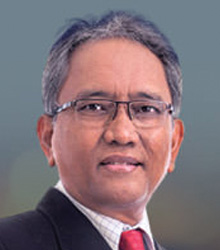
Sime Darby Plantation, Malaysia
Rosely Kusip is a born Malaysian Married with Special interest in community development. He commenced his career in 1971 as a planter (starting as assistant manager then manager) in Highlands Lowlands Bhd with significant experience in the planting and management of oil palm, rubber, cocoa and coconut crops. 2010 till presently he is member of the following mainly oil palm plantation companies in the Sime Darby Group.
• Sime Darby Plantations Sdn Bhd
• New Briton Palm Oil Plantation
• Minamas Plantation
Playing an active role in fiduciary duties and overseeing the strategic growth, expansion and performance of both upstream and downstream business of the above group of companies.

(Indonesian Farmer and Fisher Society Organization)
Agusdin born in jakarta, in 1962. He was a grower, growing corn and native banana in a ha land in Majalengka,West Java, Indonesia. He found a foundation called Tani dan Kebun in 1994 dedicated for transfering a proper technology to empower the small holder farmers in some remote areas in Indonesia. Since 1998 to 2011 active on the initiatives of the Indonesian Farmers and Fishers Society Organisation (WAMTI) to advocating smallholder farmers and fisherfolks rights. At the WAMTI general assembly on 24 march 2011 he was elected to become the President of WAMTI for a period of 2011-2016 and on 20 april 2016 he was re elected for The priode of 2016-2021.
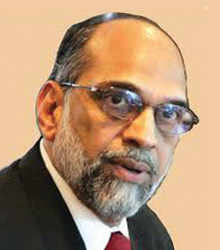
Er. Avinash. C. Tyagi, a 1973 graduate from University of Roorkee, India and a post graduate from Indian Institute of Technology (IIT) Delhi, has 37 years of experience dealing with various facets of water resources management. He has worked in water resources sector for Government of India for 28 years at Central Water Commission (CWC), Inter-state Tungabhadra Board, and Ministry of Water Resources. Er. Tyagi was the Director of the Climate and Water Department of the World Meteorological Organization, a specialized UN Agency, and is responsible for providing support to the countries in the field of water resources management including flood management and adaptations to climate change particularly in the water and agriculture sectors. Er. Tyagi has been associated with activities of ICID in the past as an observer in its Working Groups on flood management and climate change and strived for closer relationship between ICID and WMO.

Agriculture and Food, Luxoft, USA
Richard Kottmeyer is best known for having led both Accenture & IBM's global Agriculture & Food Production practices, bringing the industry to a data and analytic centric focus, and for being the Global Voice of the Consumer Leader where Expert on the intersection of information technology and agriculture, particularly tied to producers. Emphasis on technology, grower services, emerging market growth strategy, consumer loyalty and brand building, analytics and strategy, mergers and acquisitions, plant operations, and creating structured/unstructured intelligence operations to advise on areas as diverse as commodity price optimization to consumer sentiment. Globally recognized leader on consumer science, market trends, and big data usage to predict consumer food tastes, trends on sustainability and animal welfare and regulatory “hot spots”. He is currently VP Agriculture and Food with LUXOFT, SEATTLE, WA

Global strategy group, KPMG, Singapore
Chris is a strategy consultant working in KPMG's Global Strategy Group. Currently based in Singapore, he has a range of experience both in the UK, Europe, and South East Asia, working across industrial sectors (Agriculture, Chemicals, Transportation, and Renewable Energy). He has been based in Asia (Singapore) for almost seven years and has conducted consulting advisory engagements helping clients ranging from Government, project developers, investment banks, private equity and venture capital, to grow their businesses or advance their policies through market understanding, strategy formulation, business planning, fund raising, commercial due diligence, and policy implementation.
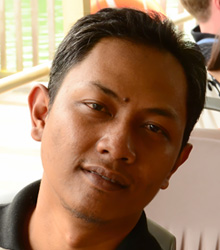
PT. Applied Agricultural Resources, Indonesia
Totok Suswanto is M. Sc., Land Management, University Putra Malaysia (UPM) and currently associated with PT AAR Indonesia as Agronomist / Senior Research Officer
Abstract Geospatial Application For Drainage Improvement Project: Case Study In Berau, IndonesiaOne of the agronomic problems faced in planting oil palm in marginal areas is drainage problem, which not only can retard oil palm growth and limit yield but also, in worst scenario, reduce planted hectareage. Drainage design involves multi diciplinary skills and parties right from surveyor, engineer, agronomist, estate management up to decision makers and it usually involves big capital expenditure. Geospatial tools and technology are prerequisite in order to produce effective and efficient drainage designs. A case study of drainage improvement project in Berau, Indonesia was presented where about 1,000 ha area affected and causing 15% lower yield. Unlike typical drainage plan that is based on catchment analysis where canal, drains, outlets and end waterways are specifically determined, the typical approach in the study area is no longer be applicable due to inefficiencies and obstacles along waterway, causing water to be inundated and cannot be drained. Using both digital elevation model and ground survey, a systematic drain network was suggested where water was diverted across sub-catchment to an outlet that has access to a better waterway. The drains have to be levelled and dug precisely to allow water flow against the natural direction. In total, the project costs about USD 460k but it is expected to generate additional 4,350 tons/year at optimum condition. The benefit to cost ratio at 1.2 and break event at the 3rd year suggest that the project is feasible in term of economic.
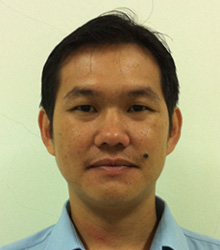
Graduate of Gadjah Mada University in Yogyakarta, Majoring Cartography and Remote Sensing. Experienced in building GIS for Oil Palm Plantation and Forestry industry. Founded a consultant company which services in GIS system development and solution for agribusiness industry. Now a freelance, provide mapping services using UAV and GIS analysis.
AbstractInformation technology continues to evolve, brings the access of information easier and faster. Including geographic information system (GIS), with the enhacement of technology today, geospatial data become more quickly obtained and distributed. It makes distance factor no longer exists to convey information. GIS applications have evolve toward mobile. With mobile applications, survey and monitoring activities conduct more rapidly. As an agricultural country, it is expected the development of GIS can be utilized to its full potential for the growth of plantation industry. The spatial of the plantation which has a vast area and spread estate, need geospatial data to support it's operational. By applying GIS applications, the development of the plantation industry will be more effective and efficient. Application of GIS can be applies at all stages of the plantation estate development, during the pre- Land Clearing stage, Land Clearing, Maintenance, Harvesting, and Replanting. GIS applications also suports in ensuring plantation sustainability.

Garuda Robotics Pte Ltd, Singapore
Mark Yong is CEO and co-founder at Garuda Robotics, a Singapore-based provider of drone solutions and services. He has 20 years of experience in robotics, with bachelors and masters degrees from Carnegie Mellon University and the University of Michigan. He was previously an award-winning lecturer in the School of Computer Engineering at Nanyang Technological University, Singapore.
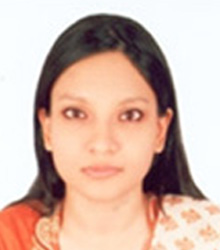
Bangladesh Institute of ICT in Development (BIID)
Sumaiya Nour works as program manager at Bangladesh Institute of ICT in Development (BIID), which is private sector organization specialized in ICT for Development (ICT4D) with e-agriculture as its core area. Her expertise lies in project management encompassing project development, planning, coordination and reporting. She has been managing several projects including ‘STAR-IrMASaT’ which is a research project on developing an irrigation scheduling app, “Zero Cost Extension and Advisory Service (EAS)” for providing free advisory service to farmers, “Smart Farmer, Smart Future” an idea generation project on e-agriculture and Farmbook” a business planning tool for farmers. These projects are implemented under “e-Krishok” which is the service brand of BIID for e-agricultural services. She has interests in working with projects on ICT for facilitating empowerment of women and youth, making ICTs more accessible to rural people and behavioral change programs to accelerate adoption of technologies. She has been working with BIID since 2013, and has graduated from University of Dhaka with major in
Abstract Irrigation Scheduling and Advisory AppThousands of hectares of agricultural land in Bangladesh’s southern delta is fallow in the winter months, which is a primary reason that Southern Bangladesh has one of the most concentrated pockets of poverty and persistent food insecurity in South Asia. The proximal cause of low cropping intensity in this region is a lack of investment in irrigation, despite an abundance of surface water and potential for high value cash cropping. Geospatial information is currently available in gross terms for the hydro-dynamics of the major river systems of the delta, but the dense network of canals, tidal, and salinity fluctuations govern the availability of fresh water for dry-season cropping in different locations and are insufficiently characterized. Remote sensing offers the unique opportunity to improve upon that information and unlock the potential for irrigation and production of a second, dry season crop. The irrigation scheduling app links the farmer with the irrigation service provider. It enables the farmer to pick a service provider and indicate the location of the field. Once a crop has been planted, it informs both of them on a weekly basis as to whether a field needs to be irrigated and on which day this will most likely happen. This application has been developed as a research project in partnership with CIMMYT whose objective is to use remote sensing (e.g., WorldView 3, Landsat 8), simulation approaches, and ground-based campaigns to characterize freshwater resources availability as well as cropland suitable for irrigation in the winter months. The intersection of these data layers will identify ‘windows of opportunity’ for different cropping intensification strategies based on efficient water allocation and use at multiple spatial scales, thereby unlocking the potential of winter cropping for farmers and the private sector

SMARTAgBiz, Singapore
Raghavan Sampathkumar (LinkedIn) is currently based in Singapore. Raghavan is an agribusiness professional with 360 degree understanding of the complex political, socio-economic, environmental and cultural perspectives of the Ag-food value chain. He has more than 12+ years of experience working in various subsectors of food & agribusiness including agro commodities, international trade, agri-inputs, biotech, and animal nutrition sectors across Asia-Pacific. He graduated with High Distinctions in his Master of Agribusiness degree from University of Adelaide, Australia and is also an alumnus of TNAU, Coimbatore, India. In his career, he has worked with several companies such as Monsanto; in different roles including as a Consultant – International Marketing with a Canadian Pulse Growers association; and also as a freelancer with many clients including Promar Consulting, Japan and DSM. He also founded “SMARTAgBiz”, a boutique consulting firm that focuses exclusively on food-agribusiness-animal sectors. He regularly speaks at various institutes including his alma maters; delivers guest lectures; and mentors graduating students. He writes regular commentaries/columns related to global agri-food industry trends, food crisis, sustainability, and poverty.
Abstract Geospatial Technology Applications for Augmenting Regional and Global Food SecurityWith the advent of more technologies including GIS, GPS, GNSS and LIDAR, agriculture (primary production) has undergone greater transformation towards ‘Precision farming’ especially in advanced economies including the US, Australia and certain parts of Europe. Precision farming, variable rates of application (VAR) of inputs to improve use efficiency, adopting sustainable practices that minimize ecological footprint of farming, geospatial technologies for crop and yield and soil mapping, better and accurate weather forecasting (such as drought) to improve responsiveness and the list of potential applications is getting only longer. Day by day newer possibilities of application of the above mentioned technologies in isolation or in combination with others such as agronomy, post-harvest practices, storage, transportation and distribution are opening up. The whole food value chain and the entities involved therein have just woken up to the sea of opportunities and benefits these technologies can offer. Right policy environment with a long-term vision, skilled workforce thriving in a conducive technology ecosystem, and enhanced community involvement all can help take full advantage of the infusion of technologies including geo-intelligence in augmenting food security regionally and globally.

GeoTraceability Ltd.
BA in Economics, University of Northumbria, Newcastle (UK), Expertise in communication, operations and project management He is currently engaged with GeoTraceability as Regional Manager-Asia with responsibility of Contract & Project execution and Training & support
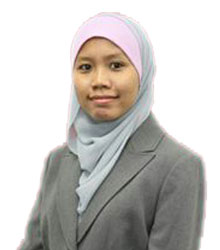
Rabihah is a researcher in Malaysian Institute of Road Safety Research (MIROS) since 2009. Holding a master degree in Occupational Safety and Health Management, she is passionate about safety and management system. Rabihah is appointed as a member of OSH in Agriculture, Forestry and Transport Subcommittee under The National Council for Occupational Safety and Health. Rabihah serves as Secretary to The Malaysian Steering Committee for Implementation of ISO 39001, who is also a member of National Mirror Committee to ISO/TC 241. Rabihah also involved in the establishment of standards such as competency requirements for ISO 39001 auditor and commuting safety management. Rabihah also a participant of ISO NextGen program, a program established to groom the experts among echelon.
Abstract eCall Initiative in Malaysia: the Concept of ImplementationPost-crash management is one of the strategic pillar in Decade of Action of Road Safety 2011 – 2020 where the main interest is to increase the response to post-crash emergencies. Response time reduction is believed will enhance the chance of survival and also reduce the severity of injuries. The session will elaborate on Malaysia initiatives in utilizing geospatial technology to improve the post-crash management. This application is a great help to road safety where the responders will be able to detect the exact location of victim and deploying the right aid to the right location. The issue of responders arriving late in the crash scene is expected to be reduced and more lives could be saved.
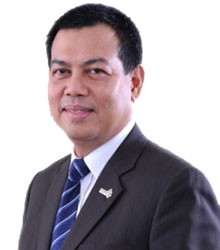
Iskandar Regional Development Authority
Malaysia
Datuk Ismail Ibrahim, a chartered town planner obtained his degree from Heriot Watt University Edinburgh. He was appointed as Chief Executive of Iskandar Regional Development Authority in 2010. He has more than 30 years of professional experience working in the public and private sectors mainly in the field of urban and regional planning, development and governance. They include the Federal Town and Country Planning Department, Penang State Government and Khazanah Nasional. Amongst his many achievements in IRDA include securing a total cumulative investment worth USD 47 billion for the period from 2006 to November 2015 and the successful execution of public infrastructure projects worth USD 2 billion for Iskandar Malaysia. He was responsible for coordinating and facilitating public private cooperation to develop Iskandar Malaysia through various programmes such as human capital and entrepreneurship, safety and security, youth, development, public transportation, housing and the environment.
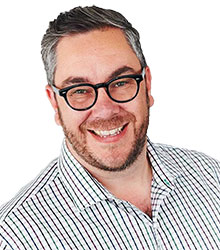
Arup
Australia
Chris Pynn is a strategic information management expert who specialises in assisting clients with the implementation of Building Information Modelling (BIM) data management and strategies targeted directly with focusing on and improving their core business drivers. His experience is diverse across infrastructure and buildings, both locally in Australia and internationally. Chris often consults internally within Arup on the set-up and strategies for international projects and he currently holds a position as the Arup Australian Buildings Group BIM Leader. He oversees the implementation of BIM across the Australasia region and is also the global leader in Arup’s BIM and digital technology development. He has extensive experience in the production of large complex structural detail and design of multi-disciplinary BIM projects and has wide experience in the successful coordination of electrical and mechanical services in major multi-disciplinary and multi contract projects, where the complex technical and contractual arrangements require clarity of purpose and responsibility together with a will to complete the work in a timely manner.
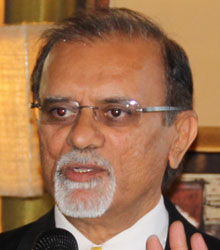
Mahesh Patel is the Chief Innovation Officer at Polaris Wireless Inc., where he started 15 years ago as the first non-founder executive heading all the technical functions of the company. His past experiences includes 20 years at Ericsson Mobile R&D. He is the sole inventor of 4 patents and co-inventor in many other patents. He holds a bachelor's in Engineering from the University of Liverpool, England.

Mr Khoo Hock Aun currently leads the Cosmo Biofuels Group since 2005 which has been actively engaged in establishing proprietary algae production systems, integrated rubber & jatropha curcas plantations, oil palm biodiesel/biomaterial downstream processing and trading activities in the Asia Pacific region; promoting use of oil palm biomass for second generation biofuel and biofertiliser, including biogas capture for electricity generation. He is also Vice-President, Malaysian Bio-Industry Organisation and Vice-Chair, Roundtable on Sustainable Biomaterials. Mr Khoo Hock Aun graduated with a Bachelor of Science (Agribusiness) from Universiti Putra Malaysia and was a Nuffield Foundation Study Fellow in the area of financing biotechnology projects with the Science Policy Research Unit, University of Sussex, United Kingdom.

With over 26 years' experience in the engineering consultancy industry, Ir Sharifah Azlina has participated in numerous infrastructure projects and development within the country and in Middle East & North Africa (MENA); India, Vietnam and Indonesia. She is the Chief Operating Officer of HSS Engineering Sdn. Bhd, with a portfolio over the operations of all business units within the Group including BIM Global Ventures Sdn. Bhd., an outfit that renders Building Information Modelling (BIM) training and consultancy services in Malaysia; and HSS BIM Solutions Private Limited, in Chennai, India, for the international market.
Ir Sharifah Azlina started her career as a Highway Engineer and was involved in the planning and design of multiple transportation infrastructures. Over the years, she has verifiable track record for her involvement in mega-projects gaining valuable rapport through successful collaboration with authorities, clients, other project proponents and industry players. In her capacity as a Project Director, she has led her team to successful and timely completion of all the projects undertaken to date. Since the year 2012, her result-oriented professional team has embarked onto the utilization of BIM for a holistic delivery of various local, as well as international projects, through the seamless integration of engineering design with, project scheduling, construction simulation and progress monitoring to provide clients with a transparent and practical project control solution. She is also a member in the buildingSmart Malaysia Chapter, a regulatory agency driving the BIM agenda at national level.

Mohamad Sazali Shaari is the current President of the Malaysian Federation of the Deaf and President of Malaysian Confederation of the Disabled. He is an activist for the Deaf community and advocates major issues from communication accessibility to the well being of the Deaf individuals generally. Advocating extensively for the Rights for Malaysian Sign Language as the national language for the Deaf under the Disability Act for the Disabled Person 2008. He is the project manager for Malaysian Sign Language publications, up to date there are 18 books published in the country. A pioneer of the Sign Language Interpreting Training Program established in 2007 and as a senior Tutor in 3 Universities teaching Malaysian Sign Language as Elective subject. Additionally, he was a former Panel member of Experts on the United Nations Standard Rule of Equalization of Opportunities for People with Disabilities, former member of the Management Committee for the World Federation of the Deaf - Asia Pacific Regional Secretariat and former Secretary of the Asia Pacific Deaf Sports Confederation. Pioneer of ICT program for the Deaf in Malaysia thru e-Pekak 1 and e-Pekak 2 award winning project funded by Malaysian Government and later was rebranded as MySign Community.
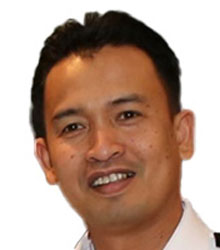
Commander Kamaruddin RMN is currently the Head of Metoc Section in National Hydrographic Centre. Cdr Kamaruddin RMN joined the Royal Malaysian Navy on 28th of Jun 1996. He was then polished and groomed to be a gentleman and most importantly, a professional naval officer in Officer Faculty, KD PELANDOK for two years and later commissioned as Acting Sub Lieutenant on 1998. In his remarkable 20 years of service, Cdr Kamaruddin RMN has numerous amount of professional contributions in the fleet as well as in naval bases. He joined the Hydrographic world in his 3rd year of service and never look back. He has served on board both RMN survey ships namely KD PERANTAU and KD MUTIARA. During his tenure at National Hydrographic Centre, Cdr Kamaruddin RMN has served various staff officer's appointments in different departments such as Computer System Department, Tides Analysis and Prediction Department, Data and Quality Control Department, and Head of Hydrography (Policy and Development).
Abstract Marine SDI supporting MyGDI (Malaysia Geospatial Data Infrastructure)Taking into consideration the need to cater for geospatial data sharing, Malaysian government has formed the Malaysian Geospatial Data Infrastructure (MyGDI) as the National Spatial Data Infrastructure (NSDI). This constitutes formal relationships and partnerships with various agencies to facilitate data access, sharing and integration. However, for the marine geospatial governance in Malaysia it is very complex due to different jurisdictions under various agencies and ministries. This presentation will share some initiatives taken by National Hydrographic Centre (NHC) in order to support MyGDI.

Norsam is with the Digital Services and Data Platform Division (DSDP), overseeing the Geospatial Development and Implementation Strategy at Malaysia Communication and Multimedia Comission (MCMC). The Malaysian Communications and Multimedia Commission is the regulator for the converging communications and multimedia industry. Norsam's role is to develop, recommend and oversee the implementation of strategies, initiatives and programmes that will lead to the proliferation of the usage of Geospatial Data on Communication Infrastructure and Services available for internal planning and public usage.
Abstract MyCOMMS : Public Access to Communications and Multimedia Infrastructure and Services in MalaysiaMalaysia Communications and Multimedia Commission (MCMC) utilizing application Geographic Information System (GIS) technology embedded in various applications for Infrastructure Planning, Monitoring and Compliance checking across department within SKMM. GIS in communication by MCMC was initiated to provide an integrated system to provide mapping solution for MCMC users to view, update and monitor their respective dataset whilst facilities the telecommunication data submission by the external users/operators/service providers via online application. At MCMC, MyCOMMS and Communication Infrastructure Management System (CIMS) develop using a GIS platform for spatial data collection and data attributes to facilitate data collection to access business data, manage assets, update network information, integrate work orders, find customer information and prepare reports. CIMS integrates and utilizes datasets from various sources available within MCMC or submitted by external stakeholders including Network Facilities, Spectrum Management, Postal, NATESCA, USP and HSBB Datasets.
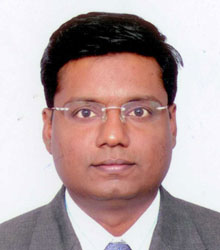
Working at Bentley since last 13+ years within the Geospatial vertical, managed key project implementations in areas of mapping, municipal, defense, and water utility in India. The projects with the above vary from Mapping to GIS Analysis, Utilities and Web based GIS areas.
Abstract Advancements in Technologies in the entire Lifecycle of Water toward a Smart Water utilityThe population of Asia and the Pacific reached 4.3 billion people in 2014, equivalent to 60% of the world's total. Population growth and economic development will increase pressure on water stressed countries. Many of the countries in Asia and the Pacific have a surplus of renewable water resources, although the amount of water available per person has decreased since 1997 in nearly every country of the region. This decrease is principally the result of population increases and economic development, resulting in more people, each of them using more of the finite water resources available. This is the driving force for all possible solutions including technology towards a water scenario for Asia Pacific region that is sustainable. This paper emphasizes on the technology that walks through the entire lifecycle of Water utility from Map, design, construct, operate and maintain of water infrastructure that would enable the utility much smarter to meet the sustainability of the water utility. This also ensure the utility to be more cost reducing and efficient. It also talks about the information modeling in water industry that helps smarter, accurate and quicker decisions. This is followed by some case studies that would talk about few implementations of the technology.
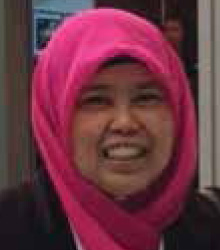
Madam Ir Rozinah Anas has vast experience in the ICT and telecommunications industry. She has work closely with the Government Agencies and various stakeholders to develop the framework and deployment of Emergency Services and Call Centres in Malaysia. There are many concerted efforts being undertaken by her under the Public Safety pillar. TAS or TM Integrated Aerial Services, Improvement in Location tracking, Disaster alerting and Video Relay Services for Person with Disabilities (PwDs) are amongst her latest forte that will foster and shape the Public Safety Industry landscape in Malaysia. Rozinah is initiating the formation of ASEAN-wide Emergency Numbering Association. She is the Project Director for MERS 999, Telekom Malaysia and is also a regular speaker in various local and International conferences.
Her aspiration is to see Malaysia becoming the hub of Public Safety within the region.
She is an active of member of European Emergency Numbering Association (EENA) which promotes the best practices of Emergency Services throughout member countries. She is a registered professional engineer with M.I.E.M, Project Managent Institute (PMI) member and Certified International Project Manager (CIPM) from AAPM, USA.
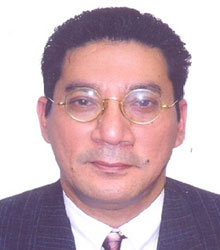
Mazmalek Mohamad, an Administrative and Diplomatic Officer with more than 25 years of experience in working with various Government agencies. On 1st October 2014, he was appointed as the Personal Data Protection Commissioner under the Ministry of Communications and Multimedia, Malaysia. Since then, he has been an invited keynote and speaker at Personal Data Protection related conferences organized by various data users all over Malaysia. Master of Science in IT Management, Universiti Teknologi Malaysia.

Software director with verifiable year-after-year success achieving business growth and innovation objectives within volatile economic environment and complex Malaysian software industry landscape. Extensive experience with building complex systems which require deep understanding of data relationship for model approximation ; highly successful in building relationships with upper-level decision makers, seizing control of critical problem areas, and delivering on customer commitments. Customer- focused and performance-driven. Led and motivated team comprised of more than 30 employees.
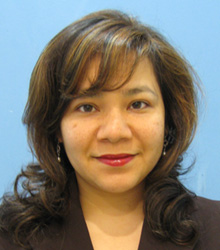
Gs. Trudy R Ganendra graduated from University of Cambridge in 1997 with a Master of Engineering and in 1999, obtained a Master of Science from Imperial College in Environmental Engineering. In 2001, she was appointed as the Director of Ground Data Solutions R&D Sdn Bhd (GDS), a Malaysian-owned high-tech LiDAR survey and mapping service provider. GDS has been providing accurate and cost efficient maps and mapping products to a broad range of clients since 1991 and has been widely used by developers, planners and designers throughout South East Asia. GDS is the only local Malaysian service provider of Airborne Laser and Digital Imagery Survey system who owns LiDAR system, is involved in the research and development of systems, and also is a direct operator with a proven track record of more than 20 years in airborne laser survey projects in Malaysia and South East Asia. She is responsible for the daily operation of GDS in both business and operational capacities. Her business responsibilities encompass corporate policies, financial analysis and strategic relations. The operational aspects involve bidding, planning and execution as well as reporting and client liaison. She has successfully executed more than 100 LiDAR projects to date.

Disaster is a sure occurrence that strikes all counties around the globe, regardless if it is developed or in developing phase. It is directly associated with wide-scale destruction of human life and creates negative impact on social structure. All disaster response goes through a cycle including preparedness, occurrence, relief, rehabilitation, reconstruction and mitigation. Current advances of information technology in disaster management delves into all levels or phases by creating proper awareness and giving all the resources for smarter decision making in order to minimize the effects of the disaster.
SkyMap Global is introducing the Sky SmartMap platform which integrates satellite imagery (daily basis), near real time weather information, mobility solutions in a cloud based dashboard management system that also allows simulation and report generation. A powerful solution, this platform provides access to satellite imagery and content from various service providers and enables the user to view, search, download and process satellite data to perform various services on the go. Its self-serving approach enables the user to utilize the capability of the platform and access different ranges of data from various service providers in desired time frames. This platform aims at providing access to complex algorithms in a straightforward and simple-to-use manner to various classes of users.